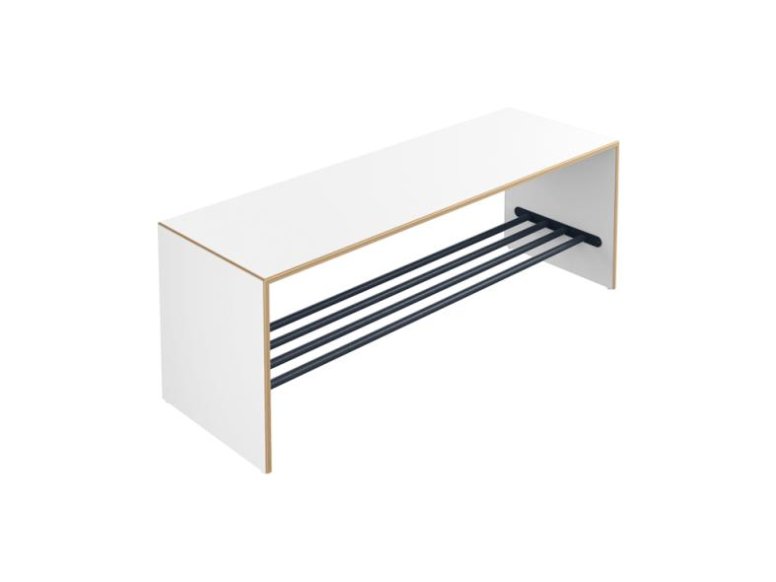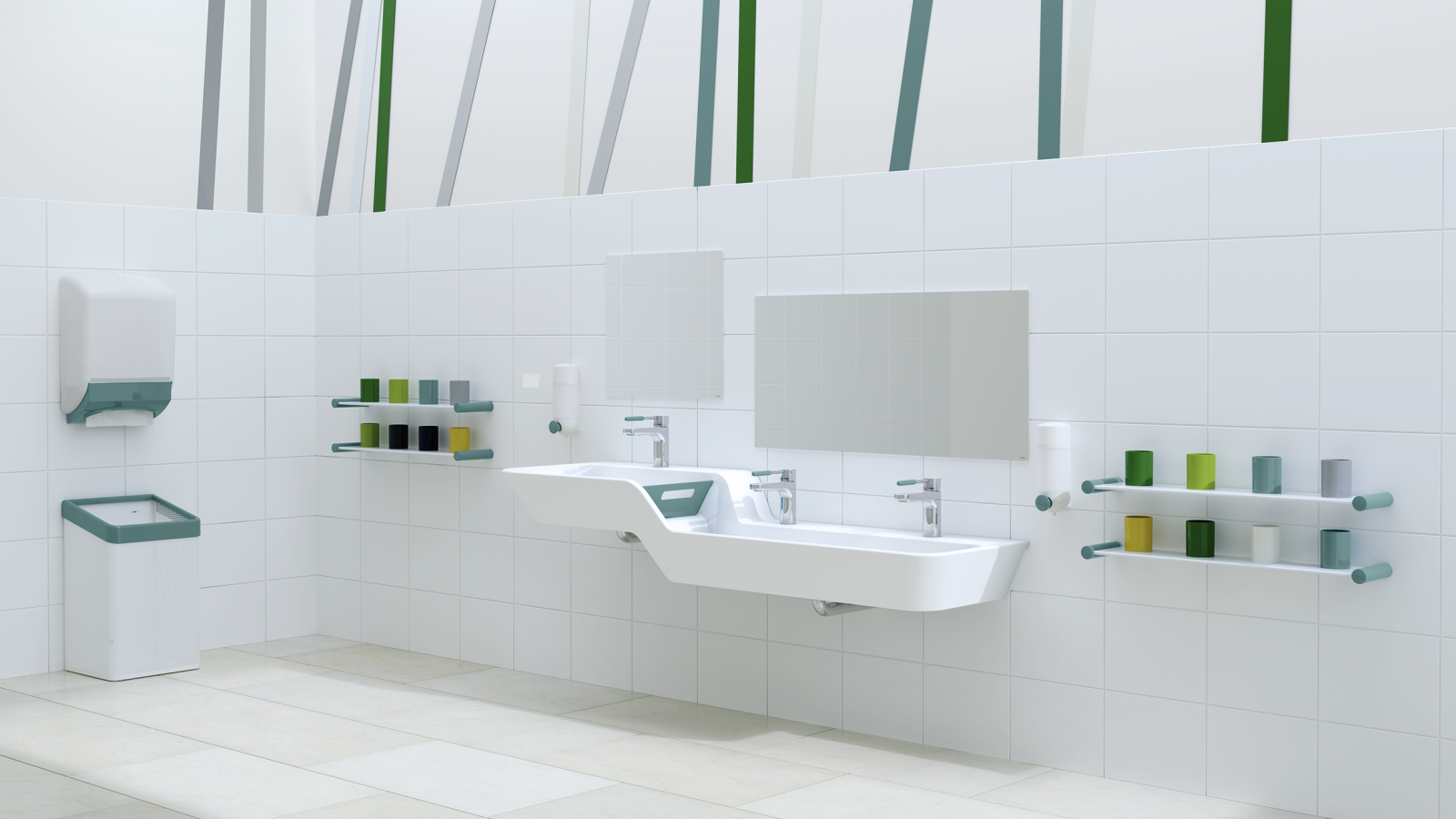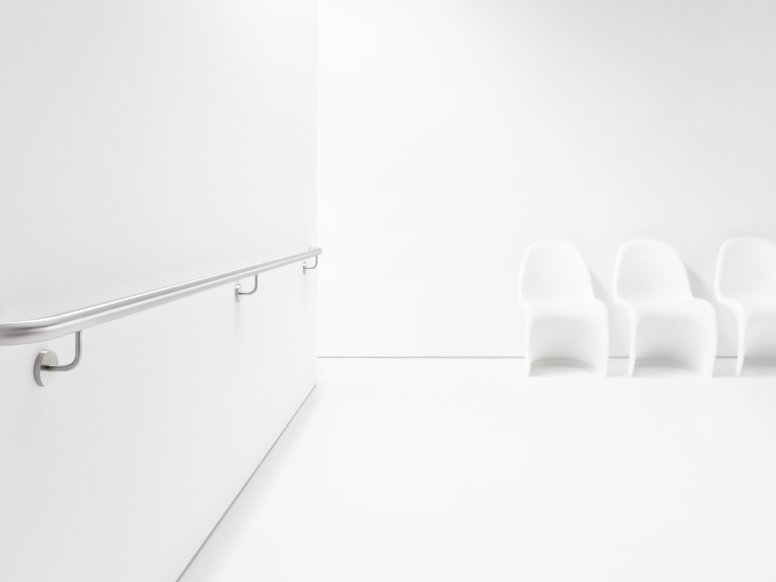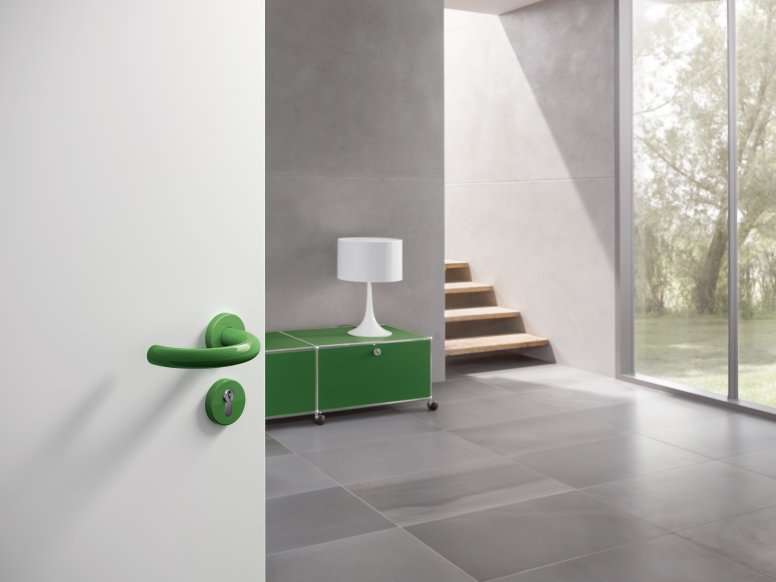HEWI MAG / know
Why an attractive day care centre’s interior design mean greater well-being for both children and teachers.
According to the Reggio Emilia approach to pedagogy, the room is the third educator. It should be oriented towards the needs of the children in it. This is after all, their extended living space. They develop their physical, mental and social skills. Which is why the pedagogical design of their space poses challenges for the planners of day-care centres as much as for the educators.
Society is changing and daycare centres are also feeling the effects of this. More and more parents are placing children under the age of three into daycare. Children this young place different demands on the design of the daycare centre than older children.
Equally as challenging are issues such as all-day care, lack of space and staffing. It’s important that the nursery's interior is designed in such a way that the children feel comfortable alongside the teachers. Why? Because nursery room design needs to be individually tailored to the requirements of its users. It’s also been proven that architecture has a positive effect on children's learning. Four tips can help planners execute their design:
Tip 1: Choosing the right colours
It goes without saying that the colour scheme in a day care centre influences the well-being of both children and staff. The right choice of colour makes everyone feel more comfortable. But which colours or tones have which effect?
- Warm colours: Create a personal, cosy atmosphere.
- Cold colours: Seem more businesslike and functional, but still offer a relaxing, calming effect.
- Light colours: Have a light, friendly effect and are particularly effective in smaller rooms.
- Dark colours: Can convey a sense of security, but can also have a gloomy and limiting effect, especially in smaller rooms.
Natural tones are often recommended for the colour design of a day care centre, because studies have shown that day care centre users perceive them as particularly pleasant. And not just for the children; there are parents, teachers and cleaning staff to take into account as well. Different shades of green, such as yellow/green, grass/green or olive/green, have a particularly calming effect. Brown and beige tones, including wood and clay colours, ochre, sienna, taupe or sand are also very popular.
Whatever the colour concept it should not just be reflected on the walls, but also in furniture and accessories, for example. A good example of a child-friendly nursery interior design with a matching colour concept can be found at "In der Kammgarnspinnerei", a nursery in Brandenburg an der Havel.
Tip 2: Choosing the right furniture for the entrance hallway
An important location in every day care centre is the entrance area. The hallway not only connects individual rooms, but also functions as a cloakroom, storage room, drop-off and pick-up point, as well as a movement area for children. This hub like entrance area needs to provide orientation, relevant information for parents (via a notice board for example), be inviting and welcome the children with a friendly feel.
HEWI offers flexible solutions for daycare centres with its furniture M20 range, which includes a hanging shelf, suitable for the cloakroom area. This shelf, offers excellent practical storage space with triple hooks available in 16 different colours - matching the chosen colour and room concept of any daycare centre. Of course, the HEWI range also includes matching coat rails, as well as practical benches with a shoe rack. M20 has a modular design principle which makes it extremely flexible and easily integrated into any nursery or kindergarten.
Tip 3: Consider security at the door
Security is one of our most important basic human needs - and should naturally be a prime consideration when designing nursery rooms. Regardless of whether its windows, doors, or partition wall areas - it’s vital the right hardware is chosen for them. HEWI offers several outstanding solutions for this. Of course they meet all the requirements a nursery or kindergarten places on safety whilst keeping in mind ease of access for the youngest children, parents and carers.
A good example of this is the design classic System 111. The high-gloss polyamide used is not only available in a range of bright colours that match the nursery's interior design, but is also easy to clean. The non-porous surface is significantly less susceptible to germs than many other materials.
Tip 4: Plan sanitary areas hygienically
As well as the aspects already mentioned, of course the washroom area must also be kept in mind. The Corona pandemic has made it crystal clear just how important it is to pay particular attention to hygiene. Even younger children need to know the relevance of good hygiene. HEWI offers products that support children in their everyday hygiene. They also enable daycare centres to meet the highest hygienic requirements. HEWI has developed washroom shelves specifically for the needs of daycare centres. These are available either with towel hooks or with triple hooks. There is also a variant with toothbrush cups and triple hooks. The holders, cups and hooks are made of high-quality, easy-care polyamide. Great care has been paid to the safety aspect. The towel hooks are always turned away from the user to prevent any risk of injury. The HEWI portfolio also includes a washbasin suitable for daycare centres. This is made of cast mineral and has a non-porous surface. This material is very easy to clean, even if acrylic or finger paints need to be washed off. Our [washbasins for children] are a new addition to the HEWI range.
everyone benefits from an attractive nursery interior design
Consistently implementing day care design has numerous advantages: not only do the children feel more comfortable ad at ease, it also promotes cooperation within the team. With the support of the entire staff this concept makes everyday life easier for everyone. Not to mention the positive effect on the public image. So it makes a lot of sense for planners and educators to work together on creating the most effective daycare centre concept possible.
You can find more information about funding opportunities that may be available for daycare centres and schools in our MAG article.
Stay up to date
Want to know more about our products? Subscribe to our newsletter now. Each month, we’ll let you know about exciting new products and other interesting news from HEWI.







